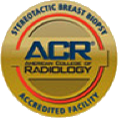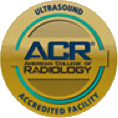Normally, there are four main arteries that supply blood to the brain. In most people, links between these four arteries allow one or more of the arteries to become completely blocked without significantly affecting blood supply to the brain. A temporary balloon occlusion test is often performed if there is an abnormality of one of the arteries (such as an aneurysm or tumor). The test can show if the abnormal artery can be temporarily or permanently occluded without affecting blood supply to the brain.
A small catheter is placed into an artery in the groin or arm and passed into the head using fluoroscopic (x-ray) guidance. A small balloon is attached to the end of the catheter. Once in position in the artery in the head, the balloon is inflated. While the balloon is inflated, clinical testing is conducted. Every few minutes, testing is performed to check hand grip, foot flexion and extension, language, memory, orientation, and facial expression. If a patient has good connections or collaterals, the other arteries send enough blood to the brain so there is no change in the brain function. In this case the balloon is usually left in place for thirty minutes, then deflated and removed. If the brain lacks these connections and not enough blood gets to the brain, the patient may develop weakness in an arm, or difficulty speaking. In this event the balloon is immediately deflated and removed. Once removed, the blood flow is restored and the weakness goes away, usually within seconds.








